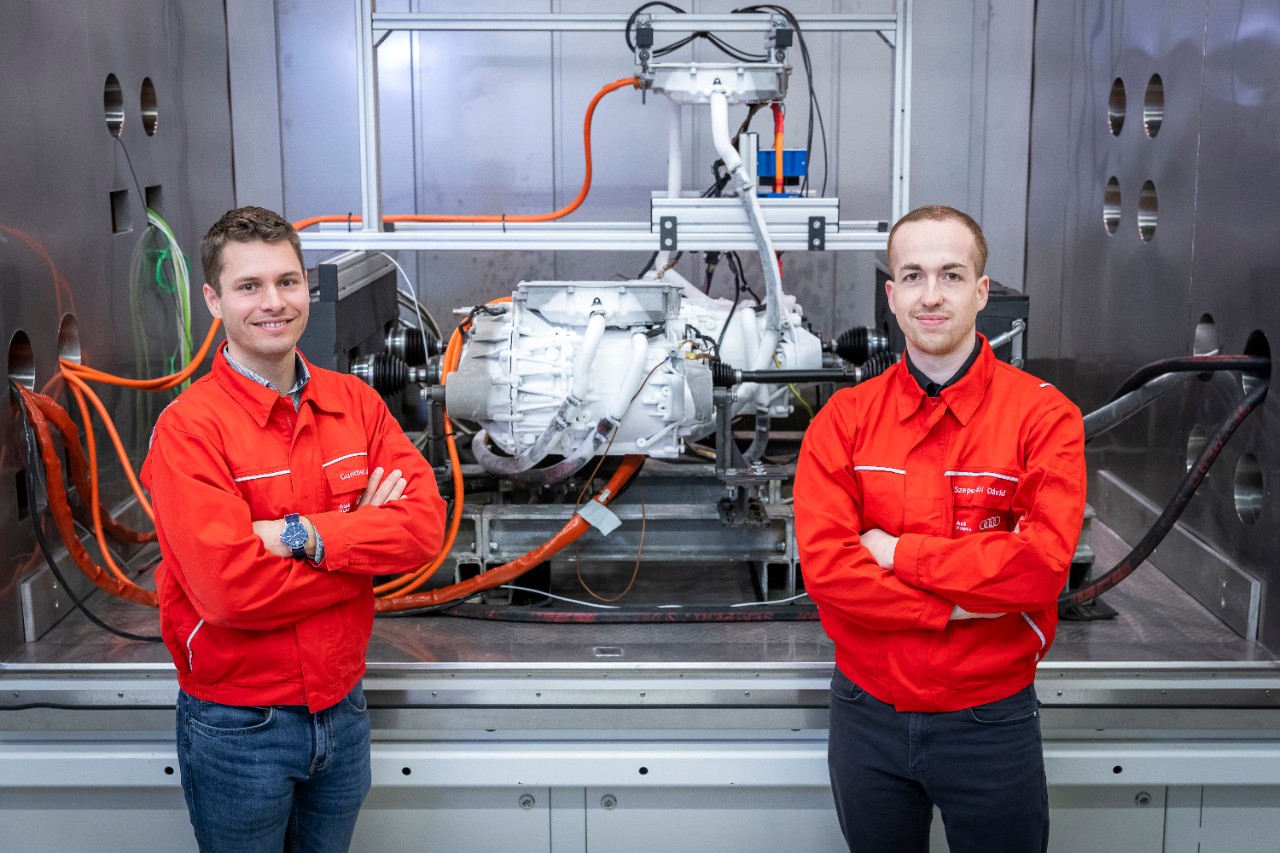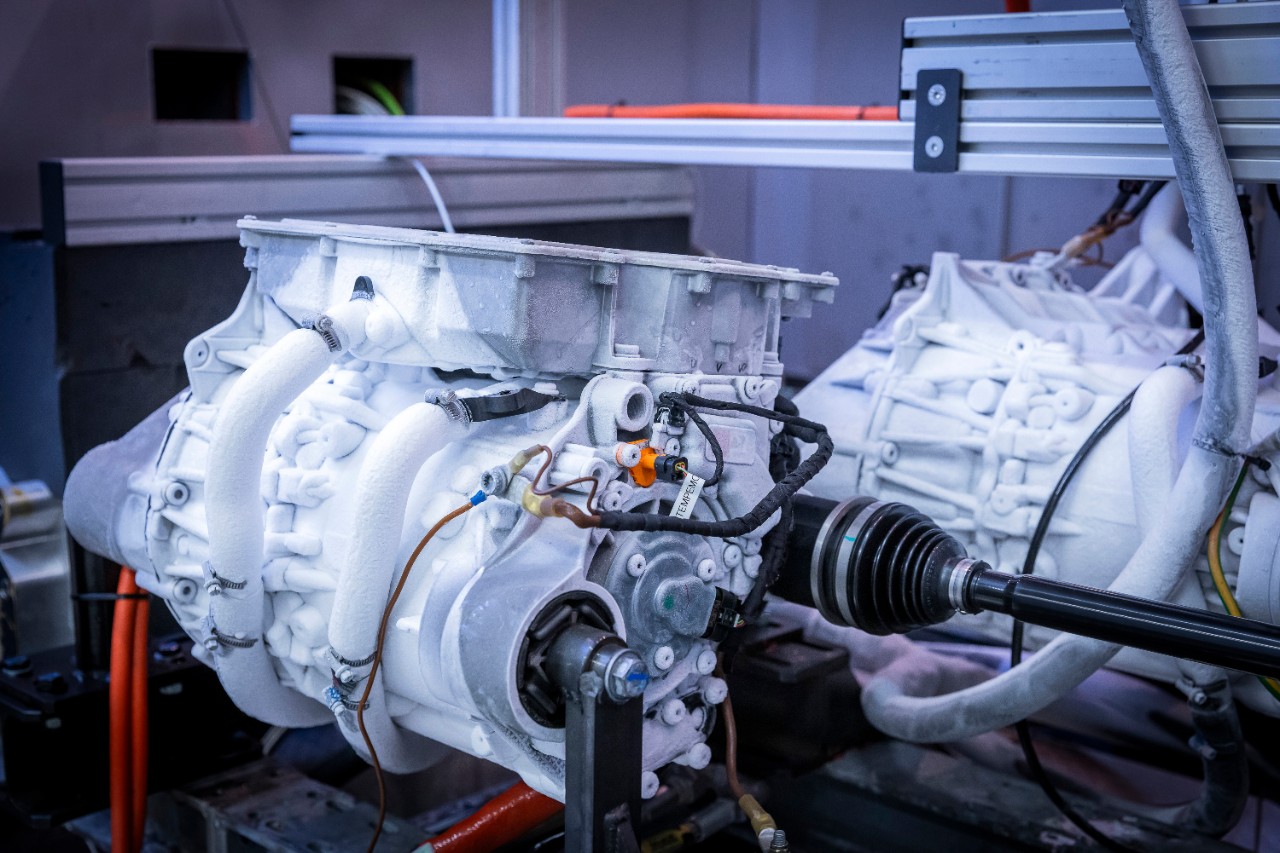Although we can also carry out tests during powertrain audits in our development center for electric drives that are only available here, such as rotor magnetometry, there are tests that require Mohammed to go to the mountain, i.e. climatic conditions that cannot be simulated here in Győr. In this case, “the son of man”, development and application engineer Dávid Szepesvári, and development engineer and technical coordinator Mátyás Gunther, packed their ice pants and arrived at the Audi-Volkswagen test center in the Arctic Circle, encountering a -28 degree winter in Finland, after a 12‑hour flight and a snowy drive.
Our young engineers talked about their unconventional jobs and fascinating adventures.
Mátyás Gunther: Within Powertrain Development, we work in the application team in the field of power electronics development, integrating existing electric drives into new vehicles. We check, test and, if necessary, improve the correct operation of the parameters of new vehicle types. Our tasks include the application of pure electric cars, i.e. we load the power electronics software with parameters.
Dávid Szepesvári: We also perform vehicle tests in extreme climatic conditions, and in addition to the test track in southern Italy in the summer, Muonio in Lapland, northern Finland provides further testing possibilities in the winter, where Audi and Volkswagen have test track centers next to each other.

It’s not every day one gets to travel to the Arctic Circle. How do you prepare for such a trip?
Mátyás Gunther: I’m an experienced traveler, having done five winter tests so far. You find yourself stepping out of the plane in a cold you’ve never felt before. Already in November, minus 28 degrees is not unusual, and minus 6–8 degrees during the day is considered mild. So the first things to go in your suitcase are long johns and other warm clothing.
How does a winter test and its preparation take place in such harsh weather conditions?
Mátyás Gunther: As part of the preparations for the trip, we go over the exact schedule at home, and prepare the necessary equipment. The cars arrive on trailers from Germany, so our 11-day test in November will involve four, including Q6 e-trons, all powered by our new electric PPE engine, manufactured by Audi Hungaria. We carry out various measurements on the cars fitted with standard equipment, in the climate chamber at minus 28–30 degrees Celsius and on the snowy and asphalt test track, for example during acceleration. The measurement software connected to the car runs on our laptop while we do this, recording the results. We monitor the parameters live during the measurement, and if necessary, we can intervene by changing the parameters. These tests are the basis for approving new vehicle derivatives, ensuring that they work well under all conditions.

What special authorization or skills are required to go on such a mission?
Mátyás Gunther: I think the most important thing, besides driving confidently of course, is to be able to react calmly in unexpected situations. You also need to be skilled, brave and open-minded, as the conditions under which you work during a winter test are not common at all.
Dávid Szepesvári: The test vehicles can be driven with a special certificate called the prototype license, which can be obtained after completing a group course. Here we learn how to react to unexpected situations. Having worked at Audi Hungaria for a year and a half, I never thought this would be part of my job. We spend most of our weekdays in front of a monitor, though we are no strangers to on-floor, in-factory climate chamber tests. Nevertheless, working on a test track is a truly special experience.
You are testing cars that are not yet on the market. What safety measures does this involve?
Dávid Szepesvári: Needless to say, the tests are confidential and only authorized persons are allowed to enter, no photos are allowed on the track, and our mobile phones must have their cameras taped down. Some sections of the course are equipped with sailboards to prevent you from seeing through, though it takes a man to go out in such cold to peek around.
Mátyás Gunther: We hardly met any locals, you can only bump into people in the shops. At the end of November, the days are very short, the sun rises around half past nine, and in the early afternoon it is dark again, so we work in the dark most of the time.
You spent 11 days, shall we say, in snow, cold and dark. What kind of experience was the trip for you?
Dávid Szepesvári: It was an extraordinary experience and opportunity for both of us to work in such an environment. Getting to the Arctic Circle is not something you do every day. In our free time we could try cross-country skiing or go hiking in beautiful places when the weather was milder. The trip was special for me in many ways, as it was only my second winter test. Last year I tried an electric car for the first time, right here in Finland. As I love driving in the snow, getting behind the wheel of a prototype that is not yet on the market on a test track in the Arctic Circle is really cool. It means a lot to me to be able to develop, shape and contribute my knowledge to the technology of the future.
Mátyás Gunther: The almost constant darkness can be overwhelming at first, but it also gives you the chance to experience something as special as the aurora borealis. This is a phenomenon that takes a lot of effort to see for those who are not as lucky as Dávid to experience it for the first time – the colleagues laugh together. It is visible under clear skies, which also means you have to look for it in extremely cold weather, relatively far from bright areas. For me, it lit up the sky on my fourth trip.
